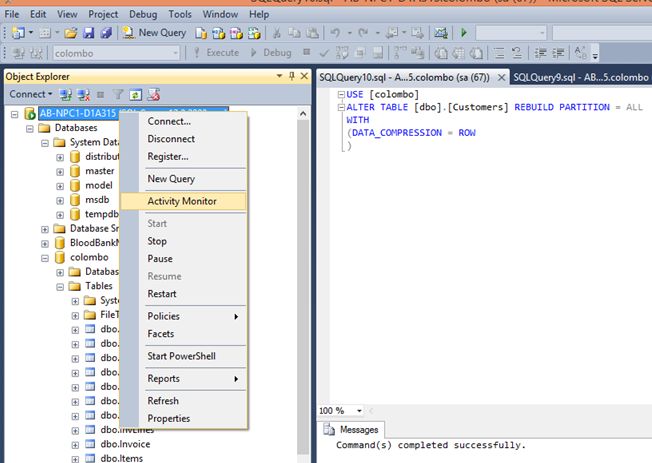
SQL Server Profiler for Analysis Services workloads is NOT deprecated, and will continue to be supported. To perform monitoring tasks with SQL Trace and SQL Server Profiler Monitoring performance by using the Query Store Open Activity Monitor (SQL Server Management Studio) View the SQL Server Error Log (SQL Server Management Studio) To perform monitoring tasks with SQL Server Management Studio Under Exceptions, click Add port and then enter a name and the port number.You can use any name to identify that this exception is for SQL Monitor.
SQL ACTIVITY MONITOR WINDOWS
Go to Security Center and click Windows Firewall. View the Extended Events Equivalents to SQL Trace Event Classes Open the Control Panel on the machine where you installed the SQL Monitor Web Server. Manage Event Sessions in the Object ExplorerĬonvert an Existing SQL Trace Script to an Extended Events Session Quick Start: Extended events in SQL Server

To perform monitoring tasks with Extended Events Set Up a SQL Server Database Alert (Windows).User Mode CPU activity is caused by SQL Server, and this counter will confirm this. To create SQL Server database alerts with Windows tools Therefore, monitor queue length closely as any consistent queue will. As per the BOL: To view the Activity Monitor in SQL Server 2005 and SQL Server 2008, a user must have VIEW SERVER STATE permission. The MySQL Enterprise Monitor and the MySQL Query Analyzer continuously monitor. View the Windows Application Log (Windows) of approved SQL statements and blocks unauthorized database activity. It contains the following topics: To perform monitoring tasks with Windows tools
SQL ACTIVITY MONITOR HOW TO
The following section contains topics that describe how to use SQL Server and Windows performance and activity monitoring tools. SELECT text, GETDATE (), FROM sys.dmexecrequests CROSS APPLY sys.dmexecsqltext (sqlhandle) Find Session-Id and Description for respective all running queries and then copy specific query's Session-Id which you want to kill/stop immediately.

Microsoft SQL Server and the Microsoft Windows operating system provide utilities that let you view the current condition of the database and to track performance as conditions change. First, you need to display/check all running queries using below query. Effective monitoring involves taking periodic snapshots of current performance to isolate processes that are causing problems, and gathering data continuously over time to track performance trends. The goal of monitoring databases is to assess how a server is performing.


 0 kommentar(er)
0 kommentar(er)
